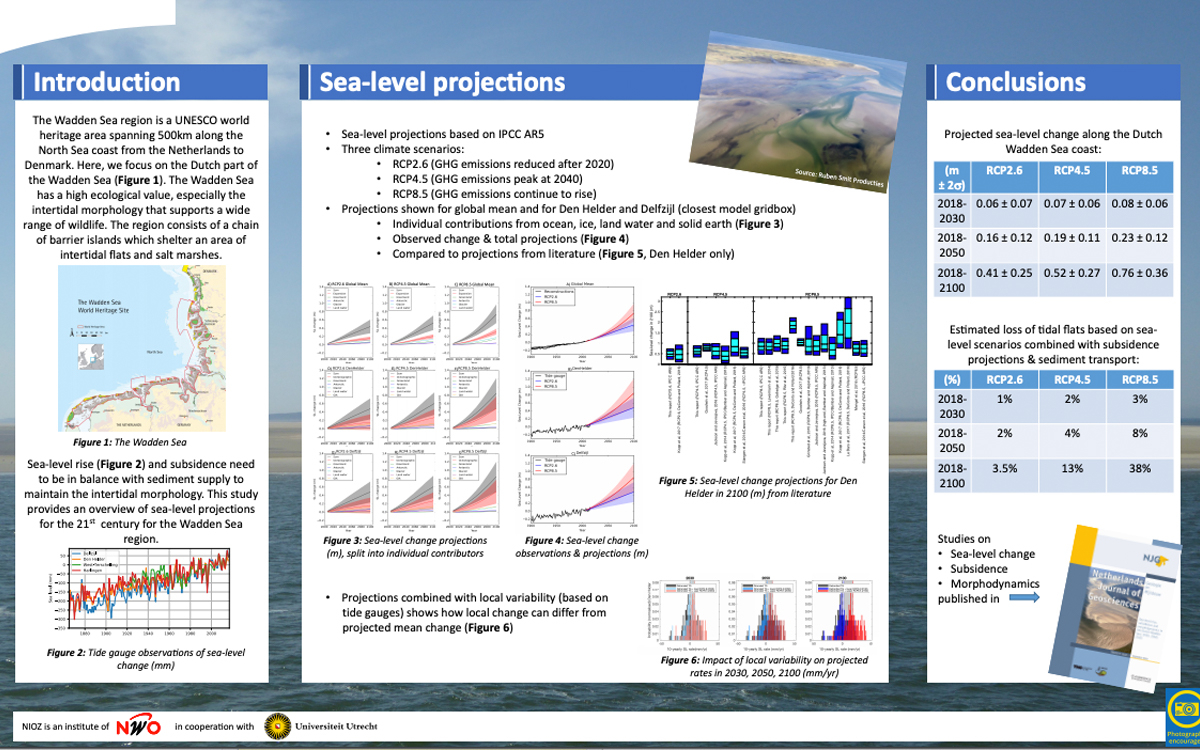Sea-level change projections for the Wadden Sea in the 21st Century

Sea-level change projections for the Wadden Sea in the 21st Century
Abstract
Sea-level rise is of specific interest for vulnerable ecological and morphodynamical regions, such as the Wadden Sea UNESCO world heritage site.
Commissioned by the Dutch Wadden Academy and Program Towards a Rich Wadden Sea, we present regional sea-level projections for the 21st century for the Wadden Sea region together with a review of the scientific data, understanding and uncertainties underpinning the projections. The sea-level projections are formulated in the framework of the geological history of the Wadden Sea region and are based on regional sea-level projections published in IPCC AR5. These IPCC AR5 projections are compared against updates derived from more recent literature and specifically evaluated for the Wadden Sea region. The projections are further put into perspective by including interannual variability based on long-term tide-gauge records from observing stations at Den Helder and Delfzijl.
We consider three climate scenarios, following the Representative Concentration Pathways (RCPs), as defined in IPCC AR5: the RCP2.6 scenario assumes that greenhouse gas (GHG) emissions decline after 2020; the RCP4.5 scenario assumes that GHG emissions peak at 2040 and decline thereafter; and the RCP8.5 scenario represents a continued rise of GHG emissions throughout the 21st century. For RCP8.5, we also evaluate several scenarios from recent literature where the mass loss in Antarctica accelerates at rates exceeding those presented in IPCC AR5.
For the Dutch Wadden Sea, the IPCC AR5-based projected sea-level rise is 0.07 ± 0.06 m for the RCP4.5 scenario for the period 2018-2030 (uncertainties representing 5-95%), with the RCP2.6 and RCP8.5 scenarios projecting 0.01 m less and more, respectively. For the period 2018-2050, the differences between the scenarios increase, with projected changes of 0.16 ± 0.12 m for RCP2.6, 0.19 ± 0.11 m for RCP4.5 and 0.23 ± 0.12 m for RCP8.5. The differences between the scenarios amplify for the 2018-2100 period, with projected total changes of 0.41 ± 0.25 m for RCP2.6, 0.52 ± 0.27 m for RCP4.5 and 0.76 ± 0.36 m for RCP8.5. The projections for the RCP8.5 scenario are larger than the high-end projections presented in the 2008 Dutch Delta Commission Report (0.74 m for 1990-2100) when the differences in time period are considered. We discuss consequences for the region.
Read more +